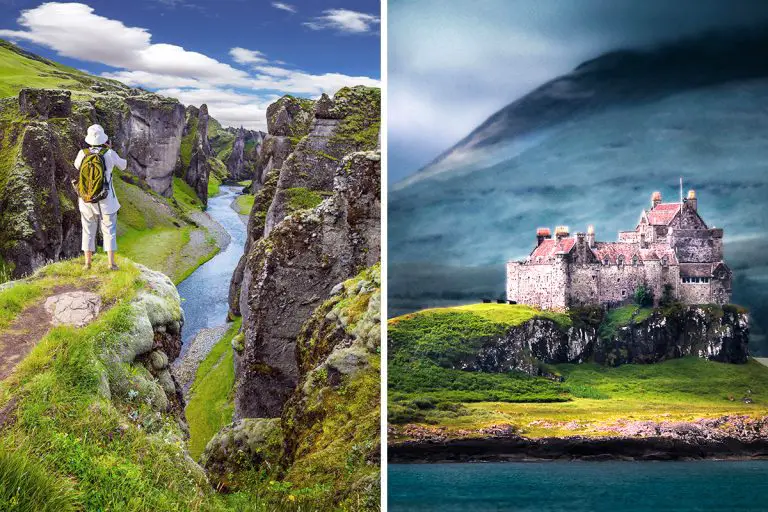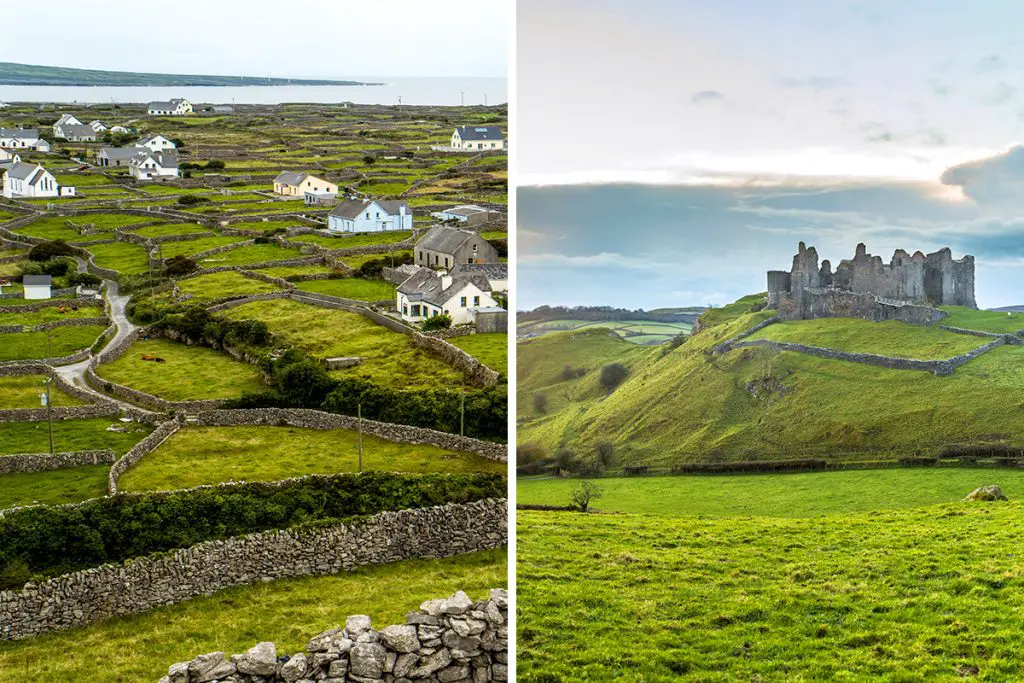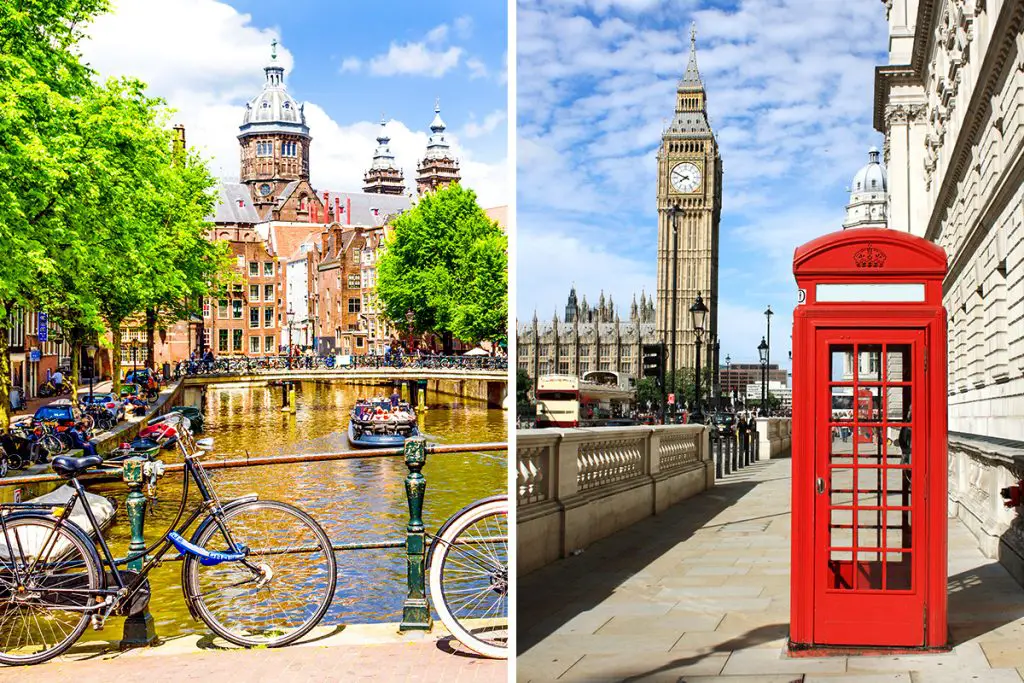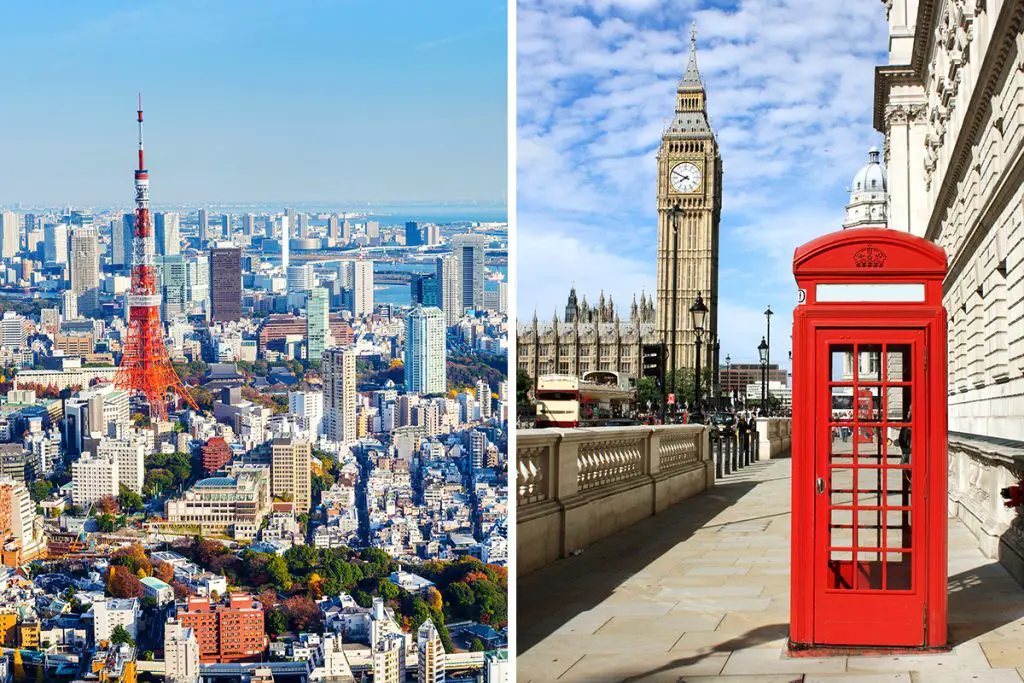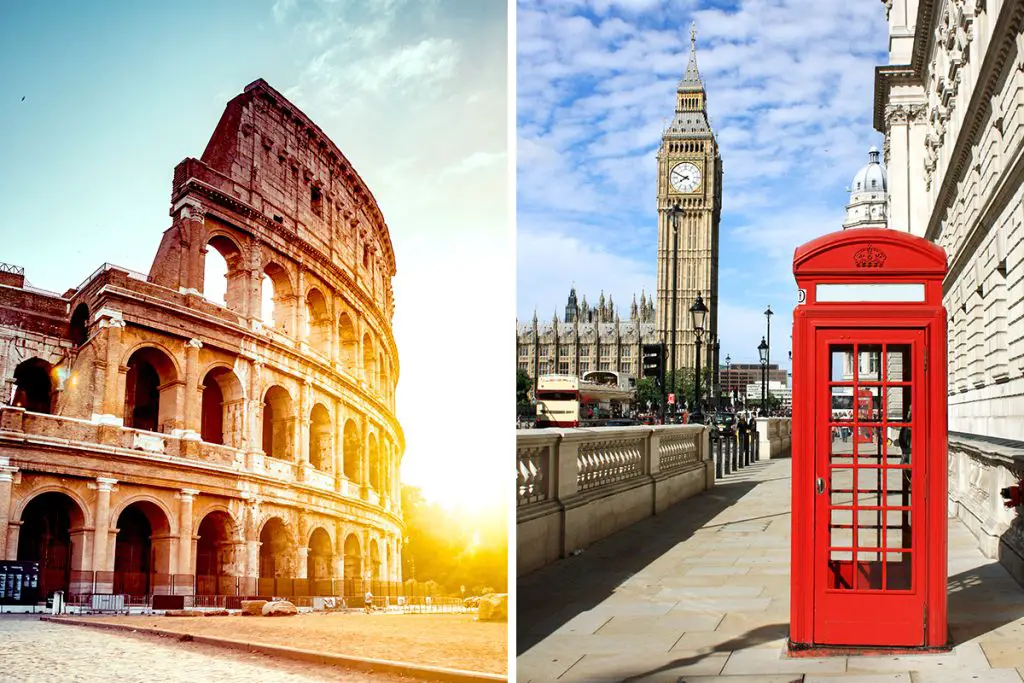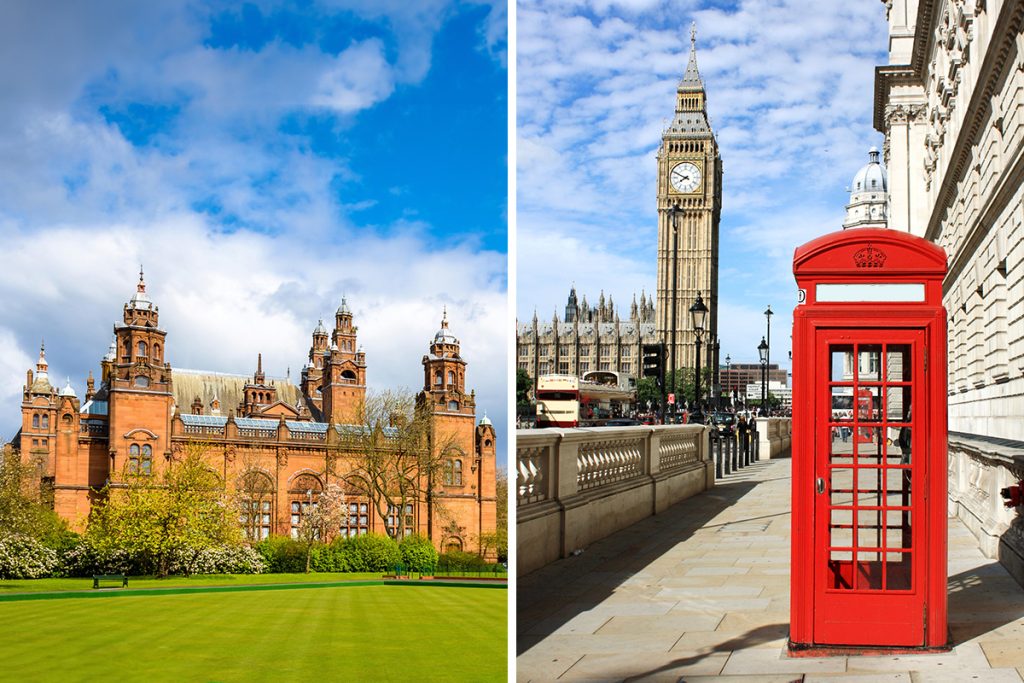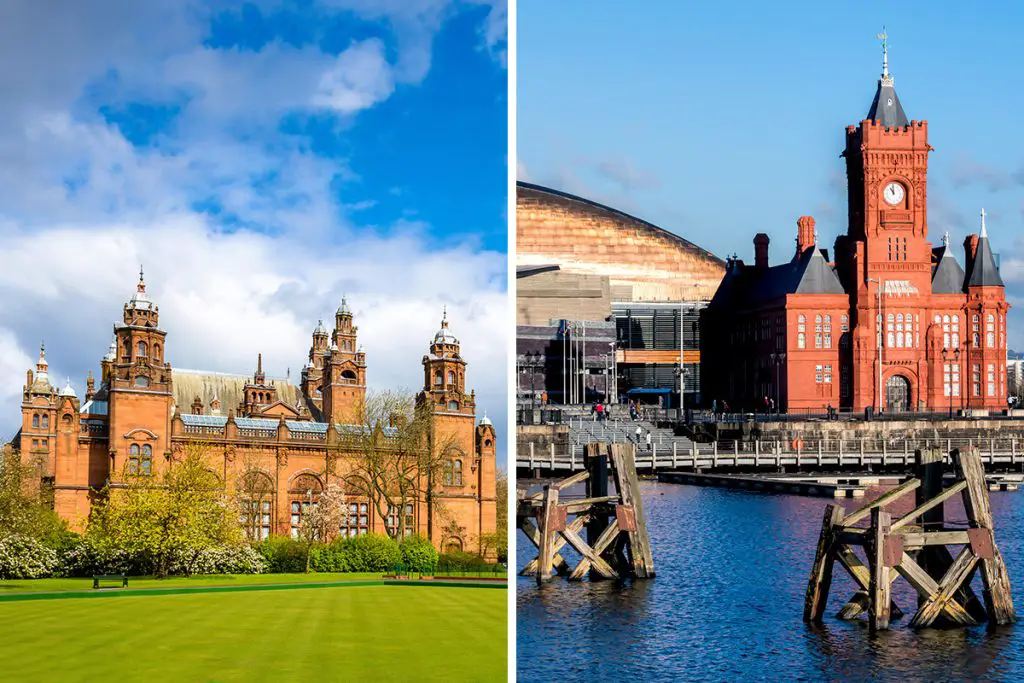Ready for a voyage through time and cultural essence? Let’s delve into the captivating histories and enchanting cultures of both Iceland and Scotland. The insights provided here might just be the keys you need to unlock your perfect vacation choice. Continue reading to uncover what makes these destinations so exceptional.
History & Culture
Diving into the histories and cultures of Iceland and Scotland feels like opening a book filled with captivating tales.
Iceland, often called ‘Land of Fire and Ice’, is a country young in terms of human settlement, only dating back to the 9th century. Its history is a rich tapestry of Viking sagas, powerful chieftains, and a unique Commonwealth period.
The cultural landscape is shaped by its isolated location and harsh climate, fostering a sense of resilience and independence. This is echoed in their traditional stories and folklore, filled with trolls and elves, that strongly impact contemporary Icelandic society.
On the other hand, Scotland’s history spans over a millennium, marked by ancient tribes, Roman conquests, and powerful clans. This timeline of warriors, kings, and revolutionaries has left an indelible imprint on Scotland’s culture. Scots are known for their fierce patriotism, which is reflected in their traditions, such as wearing tartan and playing bagpipes.
Scotland’s linguistic heritage, featuring both Gaelic and Scots languages, continues to thrive, adding a unique flavor to its culture.
Both nations place a strong emphasis on preserving their cultural heritage. In Iceland, this is manifested through a deep-rooted belief in folklore, while in Scotland, it’s seen in their proud preservation of traditions and languages.
Yet, these countries don’t live solely in the past. Modern Iceland has a thriving arts scene, especially in music and literature, whereas contemporary Scottish culture shines through in film, theatre, and festivals, celebrating both its heritage and present-day creativity.
In conclusion, if you’re drawn towards the youthful and resilient spirit flavored with folklore, Iceland’s history and culture may allure you. However, if an ancient and rich historical tapestry intertwined with proud traditions appeals to you, Scotland’s culture and history could be your ideal choice. No matter where you lean, the narratives of both these countries make them compelling destinations for any traveler.
Attractions & Activities
Let’s go on an exciting adventure to explore the striking attractions and activities that Iceland and Scotland offer.
Iceland, a geological marvel, has an abundance of natural attractions. The country’s crown jewel is undoubtedly the Golden Circle, a scenic route that covers a series of spectacular sites like the Geysir Geothermal Area and the majestic Gullfoss Waterfall.
For thrill-seekers, there’s glacier hiking on Sólheimajökull or exploring ice caves in Vatnajökull. If you seek relaxation, you can unwind in the geothermal waters of the Blue Lagoon.
In contrast, Scotland’s attractions are a blend of stunning landscapes and historical landmarks. You can’t miss the magnificent Edinburgh Castle, which offers panoramic views of the city. The picturesque Isle of Skye is a treasure trove of rugged landscapes, while Loch Ness is perfect for a tranquil boat ride – you might even spot the elusive Nessie!
The Scottish Highlands are great for outdoor activities, with opportunities for hiking, such as the West Highland Way, and wildlife spotting.
What makes both destinations unique is their remarkable natural phenomena. In Iceland, you can witness the mesmerizing Northern Lights, while in Scotland, the “Mirrie Dancers” or Shetland’s Aurora Borealis offer a similar breathtaking spectacle.
In summary, both Iceland and Scotland provide a variety of attractions and activities. If exploring stunning natural wonders and engaging in adventurous activities like glacier hiking and ice caving sounds appealing, Iceland should be your pick. However, if a mix of historical landmarks, tranquil landscapes, and outdoor activities is what you seek, then Scotland is a fantastic choice.
Beaches
Now, let’s journey to the coastlines of both Iceland and Scotland to examine their unique beach landscapes.
Iceland’s beaches are quite dramatic, known for their black volcanic sand. The most famous is Reynisfjara, located about 110 miles (180 kilometers) from Reykjavik. It’s admired for its basalt columns and the Reynisdrangar sea stacks. Djúpalónssandur, another beach in the Westfjords, is distinguished by its black pebbles and remnants of a shipwreck.
Scotland, in contrast, boasts an array of picturesque sandy beaches. Luskentyre, located on the Isle of Harris about 24 miles (38 kilometers) from Stornoway, is celebrated for its turquoise waters and white sands. Another gem is Calgary Bay, on the Isle of Mull, approximately 22 miles (35 kilometers) from Tobermory. It’s well-loved for its soft sand and tranquil environment.
However, if you’re looking for unique beach experiences, both countries deliver. In Iceland, you might spot seals lounging on the black sand at Ytri Tunga, while in Scotland, the Moray Firth coastline offers the chance to spot dolphins.
To sum up, Iceland and Scotland both offer distinct beach experiences. If dramatic landscapes and unique black sand beaches are what you yearn for, Iceland’s coastline will captivate you. But, if serene sandy beaches with chances for wildlife spotting sound appealing, Scotland’s beaches are waiting to welcome you.
Eating, Drinking & Nightlife
Let’s venture into the heart of Iceland and Scotland’s gastronomic scenes, distinctive beverages, and vivacious nightlife.
In terms of cuisine, Iceland offers a unique array of dishes. Traditional Icelandic food often includes fresh seafood, like cod or haddock, and lamb in various forms. One must-try is the pylsa, or Icelandic hot dog, lauded as the best in the world.
On the other side, Scottish cuisine features hearty and comforting dishes. From the iconic haggis to the fresh seafood from its coasts, Scotland has something for every palate. And let’s not forget about the buttery and crumbly shortbread, a beloved Scottish sweet treat.
When it comes to drinks, Iceland is known for its potent spirits and craft beers. Brennivín, a caraway-flavored schnapps, is a traditional Icelandic drink often paired with fermented shark. Iceland also boasts a burgeoning craft beer scene, with microbreweries scattered across the country.
Scotland, however, is renowned for its world-class whiskey. The Scots take their whisky seriously, with a range of styles from peaty Islay malts to smooth Speysides. Beyond whiskey, Scotland also offers a range of locally crafted gins and beers.
As for nightlife, Reykjavik, Iceland’s capital, comes alive at night with vibrant music and a lively bar scene. Don’t miss out on a ‘rúntur’, a local bar-hopping tradition.
Meanwhile, Scotland offers a diverse nightlife. Edinburgh, the capital, has a mix of traditional pubs, trendy bars, and clubs. In contrast, Glasgow is famed for its live music scene, with a variety of venues hosting everything from indie bands to traditional Scottish folk music.
In summary, if you’re a fan of unique seafood, flavorful spirits, and a lively music-oriented nightlife, Iceland is the place to be. However, if you prefer hearty meals, world-class whisky, and a mix of traditional and modern nightlife, Scotland will surely appeal to your tastes.
Shopping
Next up, let’s explore the shopping experiences that both Iceland and Scotland have to offer.
In Iceland, shopping offers an array of local goods. Reykjavik, the capital, is known for its boutique shops offering Icelandic woolen goods, like the traditional ‘lopapeysa’ sweater.
You can also find a variety of Icelandic design products, from stylish homewares to innovative fashion. For book lovers, the city is dotted with charming bookstores due to the country’s rich literary tradition.
Scotland offers a different shopping experience, with a mix of high-end stores, independent boutiques, and traditional shops. Edinburgh’s Princes Street and George Street are lined with big-name brands and luxury stores.
For something more traditional, head to the Royal Mile, where you can buy iconic Scottish items like tartan, whisky, and shortbread. Glasgow’s Style Mile is a shopping haven, with over 200 stores offering a mix of designer brands and unique local products.
In conclusion, for those seeking local crafts, design products, and woolen goods, Iceland’s shopping scene would be a delight. On the other hand, if you’re interested in high-end brands, traditional Scottish products, and a wide variety of shops, Scotland would be your ideal shopping destination.
Accommodation
Now, let’s delve into the accommodations that Iceland and Scotland have to offer to make your stay comfortable and memorable.
Iceland’s accommodation options are as diverse as its landscapes. From luxury hotels in Reykjavik, like the boutique 101 Hotel, to charming guesthouses scattered across the countryside, there’s a variety of choices.
Unique accommodation options such as the ION Adventure Hotel near Thingvellir National Park provide an opportunity to stay amidst the country’s striking natural beauty. For those looking for a self-catering option, well-equipped cottages are common throughout the country.
On the other hand, Scotland provides a blend of traditional and modern accommodation.
Luxury hotels like The Balmoral in Edinburgh offer elegance and history. If you’re looking for a truly Scottish experience, consider staying in a historic castle-turned hotel, like the Dalhousie Castle Hotel. There’s also a wide range of charming bed and breakfasts, particularly in the Highlands and the Isle of Skye, where hospitality is part of the culture.
In conclusion, both Iceland and Scotland have a range of accommodation options. If you want a blend of city luxury and unique stays amidst nature, Iceland offers a good mix. For those seeking historic luxury, charming B&Bs, or even a stay in a castle, Scotland is the place to be.
Family-Friendliness & Children’s Activities
Next, let’s take a look at how Iceland and Scotland cater to families and children.
Iceland is a veritable playground for children with its many natural wonders. Activities like visiting the Nauthúsagil Waterfall or exploring the lava tube caves of Raufarhólshellir are sure to captivate young ones. Icelandic horses are very friendly, and kids usually enjoy a horse-riding tour in the countryside.
Scotland, too, provides a treasure trove of children’s activities. Kids will love exploring Edinburgh Castle or the interactive exhibits at the Glasgow Science Centre. The Highland Wildlife Park, where they can see animals like red deer and Scottish wildcats, is also a hit. Let’s not forget about Loch Ness, where kids can enjoy the thrill of possibly spotting Nessie!
In summary, both Iceland and Scotland are family-friendly destinations with plenty to keep children engaged and entertained. If your children love outdoor adventures and nature, Iceland would be a great choice. On the other hand, if castles, interactive science exhibits, and wildlife appeal to your family, Scotland would be an excellent destination.
Getting There & Getting Around
Finally, let’s delve into the logistics of getting to and around Iceland and Scotland.
Iceland is easily accessible via air, with its international airport, Keflavik, located about 31 miles (50 kilometers) from the capital, Reykjavik. Several airlines, including the country’s flagship carrier, Icelandair, offer flights from numerous destinations worldwide.
Scotland, too, is well-connected by air, with international airports in cities like Edinburgh and Glasgow. Numerous airlines provide flights from various global locations. For a scenic journey, you can also reach Scotland by train from other parts of the UK.
As for getting around, in Iceland, renting a car is a popular option as it allows you to explore the country’s spectacular landscapes at your own pace. However, you should be comfortable with driving in varying weather conditions.
In Scotland, you have a choice of excellent public transport, including buses and trains, which offer a relaxed way of seeing the country. Car rentals are also available for those who prefer the freedom of driving.
To sum up, both Iceland and Scotland are easily accessible from various parts of the world. If you prefer self-driving and exploring at your own pace, Iceland is a great choice. However, if you prefer a combination of public transport and driving, Scotland offers both options.
Weather
Exploring the weather conditions in Iceland and Scotland, we can better understand when it’s best to visit these destinations.
Iceland’s weather is known for its unpredictability. Winters, from November to March, are cold and dark with temperatures hovering between 28-38°F (-2-3.5°C). Summers are mild and enjoyable, from June to August, with temperatures around 50-59°F (10-15°C).
Iceland experiences long days in the summer, with almost 24 hours of daylight, and conversely, very short days in the winter.
On the other hand, Scotland has a temperate maritime climate. The winters, from December to February, are generally cold and wet with temperatures around 32-46°F (0-8°C). Summers, from June to August, are relatively warm with temperatures typically between 59-66°F (15-19°C).
Scotland also experiences long daylight hours in the summer, but not as extreme as Iceland.
In summary, for milder weather and longer daylight hours, summer is the best time to visit both Iceland and Scotland. If you’re fond of winter and don’t mind shorter days, consider a winter trip.
Safety
When traveling, safety is always a primary concern. Let’s compare how Iceland and Scotland measure up on this aspect.
Iceland consistently ranks as one of the safest countries in the world. Crime rates are very low, and incidents of violent crime are extremely rare. Furthermore, the Icelandic police are helpful and approachable.
Scotland, too, is generally a safe country to visit. While crime does occur, it’s typically in larger cities and often involves petty crimes like pickpocketing. The Scottish police force is professional and ready to assist tourists.
One unique safety aspect in Iceland relates to its natural elements. The landscapes are rugged and the weather can change rapidly, so it’s essential to prepare for outdoor activities and follow safety advice. In Scotland, on the other hand, a unique concern could be related to road safety as they drive on the left-hand side of the road, which may be unusual for some visitors.
In conclusion, both Iceland and Scotland are safe destinations. However, always remember to respect the local rules and customs, and exercise caution and common sense as you would anywhere else.
Cost
Lastly, let’s compare the costs associated with traveling to Iceland and Scotland.
Iceland is often considered one of the more expensive destinations. Dining out can be pricey, with a meal at an inexpensive restaurant costing around ISK 2,500 (about $20). Accommodation varies, with a night at a mid-range hotel costing around ISK 20,000 (about $160). Car rentals, an often-chosen method of transport, start from ISK 7,500 per day (around $60).
Scotland, by comparison, can be a more budget-friendly destination. A meal at a reasonably priced restaurant could cost you around £15 (approximately $20). A night’s stay at a mid-range hotel averages around £90 (around $120). As for transportation, a daily unlimited travel card for buses and trams in Edinburgh costs £4 (approximately $5).
In conclusion, while Iceland is a bit on the pricier side, its stunning landscapes offer value for every penny spent. Scotland, on the other hand, offers a rich cultural and natural experience at a more affordable cost. Plan according to your budget and preferences to get the most out of your visit to either of these wonderful destinations.
Which Is Better – Iceland or Scotland?
Choosing between Iceland and Scotland, two enchanting destinations, is quite the challenge. Each country has its own unique appeal based on the various factors we’ve discussed.
In terms of history and culture, Scotland’s ancient castles and rich folklore captivate visitors, while Iceland’s deep-rooted Viking history and geothermal springs offer a distinctive allure. If you’re captivated by tales of knights and castles, Scotland is your destination. But if you’re interested in unique geology and Norse mythology, choose Iceland.
When it comes to attractions and activities, both destinations shine. Iceland’s Northern Lights, glaciers, and geysers are mesmerizing, while Scotland’s Highlands, lochs, and historic cities are equally captivating. Iceland will appeal to nature lovers and adventurers, while Scotland may attract history buffs and fans of breathtaking landscapes.
Beachgoers have remarkable choices in both locations. Iceland’s black sand beaches are a dramatic contrast to Scotland’s golden sands. While neither country is known for hot beach weather, the stunning coastal views can’t be missed.
Eating, drinking, and nightlife are distinctive in each location. Iceland’s unique culinary scene reflects its strong connection with the sea, while Scotland offers traditional dishes, world-class whiskies, and lively pubs. Foodies might find both countries intriguing, with Scotland likely to appeal to whiskey aficionados.
Shopping in both countries offers a chance to take a piece of your trip home. Whether it’s Icelandic wool sweaters or Scottish tartan, you’ll find unique souvenirs to remember your journey.
For accommodation, Iceland offers everything from cozy guesthouses to luxury hotels, and Scotland boasts historic inns and modern city hotels. You’re sure to find something fitting your taste and budget in both locations.
Iceland and Scotland both offer great family-friendly activities and attractions, with outdoor adventures a highlight in both countries. However, Scotland’s historic sites might offer more educational opportunities for kids.
Getting around in both countries can be done by car or public transport, with Scotland offering a slightly more extensive network. If you’re comfortable driving in diverse weather conditions and prefer flexibility, you might lean towards Iceland.
Weather-wise, both countries have cool, changeable climates. Summer offers the best conditions and longest days in both countries, but winter brings its own unique charm, especially for Northern Lights viewing in Iceland.
In terms of safety, both countries are considered safe for travelers, with unique considerations such as changeable weather in Iceland and driving on the left in Scotland.
Finally, regarding costs, Scotland generally offers more budget-friendly options compared to Iceland. But, as always, the experience is worth every penny in both locations.
So, when deciding between Iceland or Scotland, consider what you’re looking for in your travel experience. For otherworldly landscapes and a unique cultural experience, head to Iceland. If you’re after history, breathtaking landscapes, and a more budget-friendly trip, Scotland might be the one for you. Both countries promise an unforgettable journey filled with stunning sights, unique experiences, and friendly locals.

